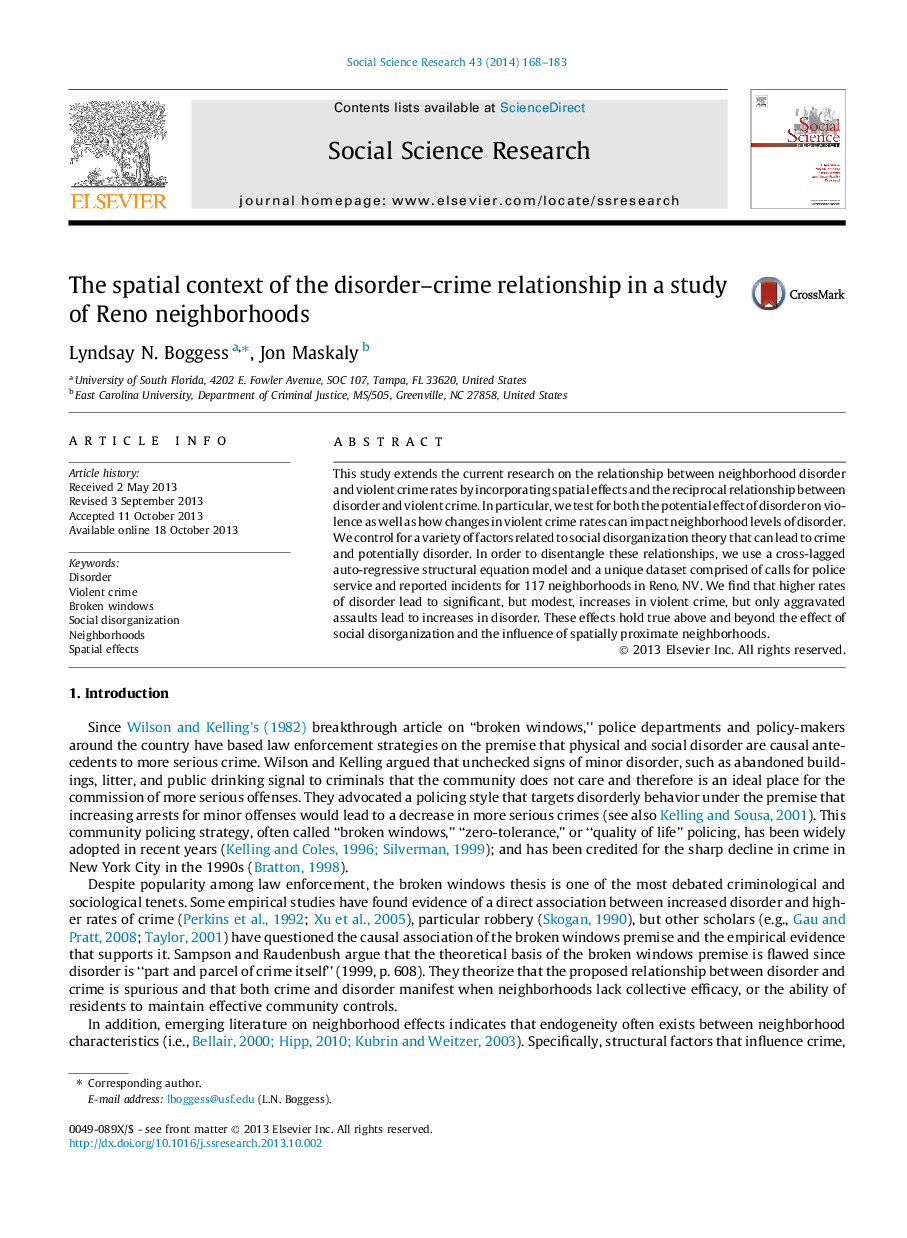| Article ID | Journal | Published Year | Pages | File Type |
|---|---|---|---|---|
| 955839 | Social Science Research | 2014 | 16 Pages |
•We analyze the influence of geographically proximate disorder and violence.•We account for the reciprocal relationship between disorder and violent crime.•Results show support for the influence of accumulated disorder on future violence.•Increasing violence, particularly aggravated assault, is also associated to future disorder.
This study extends the current research on the relationship between neighborhood disorder and violent crime rates by incorporating spatial effects and the reciprocal relationship between disorder and violent crime. In particular, we test for both the potential effect of disorder on violence as well as how changes in violent crime rates can impact neighborhood levels of disorder. We control for a variety of factors related to social disorganization theory that can lead to crime and potentially disorder. In order to disentangle these relationships, we use a cross-lagged auto-regressive structural equation model and a unique dataset comprised of calls for police service and reported incidents for 117 neighborhoods in Reno, NV. We find that higher rates of disorder lead to significant, but modest, increases in violent crime, but only aggravated assaults lead to increases in disorder. These effects hold true above and beyond the effect of social disorganization and the influence of spatially proximate neighborhoods.
